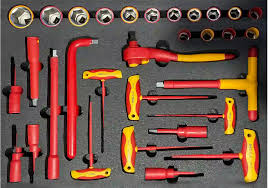5 Common Mistakes to Avoid When Using Penetrating Oil
Penetrating oil is a staple in both industrial and home toolkits for a reason. It’s designed to loosen rusted bolts, free stuck parts, and restore motion to components frozen by time, corrosion, or grime. Whether you’re working on automotive repairs, machinery maintenance, or household fixes, using this product correctly can make a world of difference.
However, despite its powerful properties, penetrating oil is often misused, leading to ineffective results, wasted product, or even damage to components. To get the best performance, it’s essential to understand how to apply it properly and avoid common pitfalls.
Let’s explore five frequent mistakes people make when using penetrating oil and how you can steer clear of them to ensure successful outcomes every time.
- Not Allowing Enough Soak Time
One of the most common mistakes users make is being impatient. Many people apply penetrating oil and attempt to loosen the part almost immediately. But these products aren’t instant fixes, they need time to penetrate the rust, scale, or grime that’s causing the binding.
What to do instead:
After applying penetrating oil, let it soak in for at least 10–15 minutes. For more severe corrosion, it may require several hours or even overnight soaking. This dwell time allows the formula to wick into tight spaces and break down the bonds effectively.
Pro tip: Tap the fastener lightly with a hammer to help the oil penetrate deeper into threads and seams.
- Using the Wrong Oil for the Job
Not all penetrating oils are created equal. Many general-purpose sprays lack the power or heat resistance required for tougher jobs. Moreover, if you’re working with sensitive materials like aluminum or electronics, using the wrong product may lead to surface damage or residue buildup.
What to do instead:
Choose a product formulated for your specific task. For example, if you’re working with aluminum components—common in automotive, marine, and aerospace applications—opt for a product labeled as the best penetrating oil for aluminum. These oils are designed to be effective without reacting with softer metals.
The right oil will not only perform better but also help protect the longevity of the parts you’re working on.
- Applying to Dirty or Greasy Surfaces
Many users spray penetrating oil directly onto surfaces coated in years of dirt, oil, or old grease. The problem? Penetrating oil can’t work its way through heavy buildup to reach the actual corrosion underneath. This reduces its effectiveness and can leave sticky residue behind.
What to do instead:
Before applying the oil, clean the area using a wire brush, cloth, or degreaser. Remove loose rust, dust, and surface grease. This prep work ensures the oil reaches where it’s needed—into the tightest cracks and threads.
- Overusing the Product
More is not always better. Oversaturating a bolt or part with penetrating oil can lead to waste, mess, and in some cases, interference with components (especially electrical parts or sensors). While the product needs to coat the surface adequately, excessive use won’t speed up the process or make it more effective.
What to do instead:
Apply just enough oil to wet the surface and allow capillary action to draw it in. If needed, apply a second coat after soaking. A targeted, measured application will get better results while avoiding unnecessary mess.
Also, keep in mind the specific area you’re working on. For electronics or fine parts, always use controlled amounts and consult compatibility guidelines.
- Expecting It to Replace Proper Tools or Techniques
Penetrating oil is a support tool, not a miracle fix. While it makes stubborn components easier to move, you still need to use proper tools and mechanical knowledge. Trying to brute-force a bolt immediately after application, or without supporting tools like heat or leverage, can cause breakage.
What to do instead:
Combine penetrating oil with mechanical best practices:
- Use heat on heavily rusted areas to expand the metal and enhance penetration.
- Work the bolt back and forth gradually rather than forcing it.
- Use the correct size wrench or socket to avoid stripping heads.
- Consider using torque or impact tools for tough jobs—but only after allowing the oil time to work.
Remember, penetrating oil is meant to reduce resistance, not replace technique.
Bonus Tip: Use It for Prevention, Not Just Repairs
Most people reach for penetrating oil only when something is already stuck. But these products can be extremely useful as preventative maintenance tools. A light coat on fasteners during assembly or after a job can help prevent future rust and ease disassembly down the road.
Apply it to tools, hinges, door latches, and outdoor fixtures periodically, especially in humid or salt-rich environments. This helps reduce long-term corrosion and wear.
Penetrating oil can make your life significantly easier when used correctly, but it’s not a cure-all. By avoiding the most common mistakes—like skipping prep work, rushing the process, or choosing the wrong …
